Just to fight! West is preparing to confront equal rivals
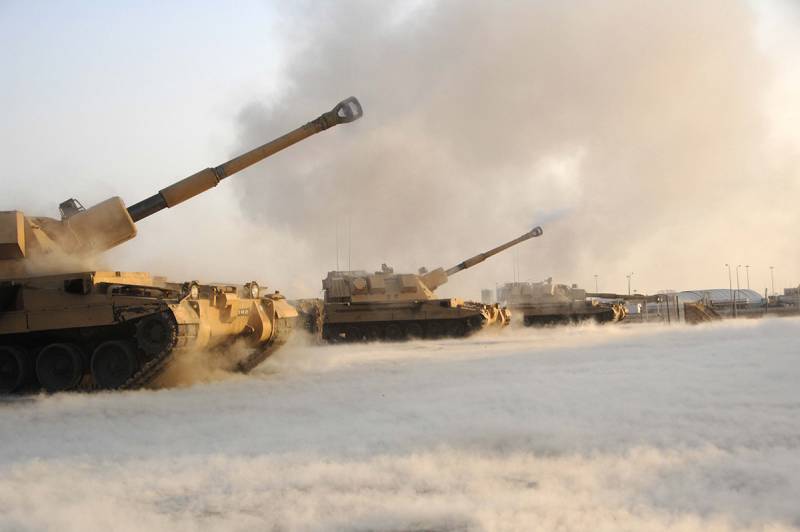
The British self-propelled howitzer AS90 needs modernization in order to avoid defeat in a future duel of long-range artillery. Currently, in terms of range, it is inferior to existing Russian guns
In the study below, Shephard's Defense Insight analytic company presents its view of a paradigm shift in global confrontation.
The prospect of confronting rivals with equal or better technologies and weapons is not at all pleasing to the ground forces of Western countries, which are therefore forced to rethink military doctrine and the concept of procurement of military equipment.
After almost two decades of military operations to stabilize and combat terrorism in Afghanistan and Iraq, the Western military began to change their minds and pay more attention to confrontation with almost equal rivals, for example, China and Russia.
During the recent hostilities, the United States and its allies conducted operations against fighters guerrilla warfare, surpassing them in the air, dominating the electromagnetic spectrum and having the most modern platforms and weapons. The pace of operations was slow, well-defended but lighter power units were used, and the overwhelming use of forces on land, in the air, or at sea was not required.
However, an almost equal rival will use equal, if not superior, capabilities of the platform and system. That is, air superiority cannot be guaranteed, operational space will be disputed at all levels, and any conflict that may arise is likely to be of high intensity with a quick exchange of strikes in order to neutralize enemy combat formations.
Increasing intensity
China and Russia have used the past ten years to modernize their armed forces with the goal of conducting short-term and simultaneously concentrated offensive operations of high intensity. Jack Watling of the Royal United Institute of Defense Research noted that there are three main emerging threats that affect the ground component. Firstly, the deployment of more advanced integrated air defense systems and this is of great importance for the West, since 80% of NATO's offensive capabilities are provided by the air force.
“At the moment, most of their firepower is directed at trying to break through the air defense system,” Watling said. This means that vulnerable air logistics and transport platforms can be used to deploy material and manpower in a theater of operations only far from the area of operations. He emphasized that this affects the ground sector, since "the West’s ability to quickly deploy a large number of troops to a given area has deteriorated."
The second concern is that opponents are adopting ground-to-air missiles, artillery systems and technologies that provide high-precision long-range fire. This may force NATO to keep the supply chain and combat support equipment away from the area of operations - up to 500 km.
The third problem is that China and Russia are modernizing their ground component regarding the main tanks, artillery and other highly effective military equipment. Since any area of the operation is likely to be close to their national borders, within their own country they will be able to build up forces and resources much faster and will need to travel a shorter distance to enter into combat contact with their opponents, and therefore they can easily surpass those available to the West forces in similar war zones.
The National Liberation Army of China (PLA) is also being reformed, moving away from excessive dependence on armored forces and moving to a structure of a larger expeditionary orientation with brigades equipped with lighter vehicles and weapons. These new formations with tanks, medium armored vehicles and the necessary logistic forces and means will be able to operate independently in order to create problems for any serious opponent. As part of these reforms, the PLA is replacing its obsolete Ture 59 tanks with new MBTs, including the ZTZ-99 and ZTZ-96.
Tank transformation
In Russia, which borders both Europe and China, a new T-14 Armata tank is being developed, which is a cause of concern in NATO countries, because it outperforms all existing Allied tanks in terms of declared characteristics. Although the tank is still at the stage of manufacturing the installation batch, its existence along with the plans of the Russian army to modernize part of the fleet from 350 MBT T-90A to the T-90M standard (with a larger caliber gun like the one installed on the T-14) is evidence strengthening armored forces, which as a result can turn into an even more serious threat on the battlefield.
For their part, the Western armies must carry out modernization so as to meet these specific threats. In order to prevent the superiority of Russian armored vehicles, many in the West over the past few years have rushed to develop, purchase and modernize heavy armored vehicles.
Germany began to receive upgraded Leopard 2A7V MBTs, as well as improving Leopard 2A6 / A6M variants to avoid their obsolescence. For its part, the United Kingdom is developing a new concept for the Challenger 2 MBT, optimized for urban space, and is implementing a life extension program to modernize the tank fleet and avoid their obsolescence.
Meanwhile, France and Germany also launched a joint MGCS (Main Ground Combat System) project, within which a new European MBT will be developed by 2035 to replace the Leclerc and Leopard 2 tanks.
Ukraine, which is at the forefront of the confrontation with Russia, in order to increase the combat power of its ground forces brought its MBT Oplot to mass production, removed obsolete T-84 tanks from its storage, upgraded its T-64BV and, finally, presented a prototype T-tank 84-120 Scimitar.
Finland accepted the delivery of 100 Leopard 2A6 tanks from the Dutch army. Poland is upgrading 142 Leopard 2A4 tanks to the 2PL standard, as well as 300 obsolete Soviet-era T-72M tanks along with the RT-91 model, until the new MBT is delivered under the Wilk program. The Czech Republic is also upgrading its 33 T-72M4CZ tanks and receiving 44 MBTs of the Leopard 2A7 standard; however, Romania plans to replace the existing TR-85 systems with Leopard 2 tanks along with Cyprus, Greece and Spain as part of a joint European defense project.
Too far?
But increasing the number and capabilities of advanced combat assets is just one piece of the puzzle. Watling said that even if the number of MBTs increases dramatically, countries like the UK do not have the ability to maintain or service them over long distances and can only do so at high costs, given the necessary additional engineering and transportation means.
“More importantly, all of these logistics facilities with advanced deployment will be really vulnerable to long-range artillery,” he added. Armored forces and their supporting convoy will be under the gun of long-range firepower and this is one of the areas, according to Watling, where the West is really lagging behind.
That is, it doesn’t matter how many tanks Russia has, because if long-range firepower can destroy the fuel and lubricants depot, they will simply stand up. It’s easier to fight standing tanks, as a result, the inequality of forces in a certain way loses its sharpness and becomes less important.
Until the counter-battery battle of long-range artillery is won, it is unlikely that armored forces will be able to come closer to enter the battle. Any of the parties that will have similar long-range weapons after the initial exchanges of blows is likely to win the battle, as it will be able to freely take aim at the advancing armored formations.
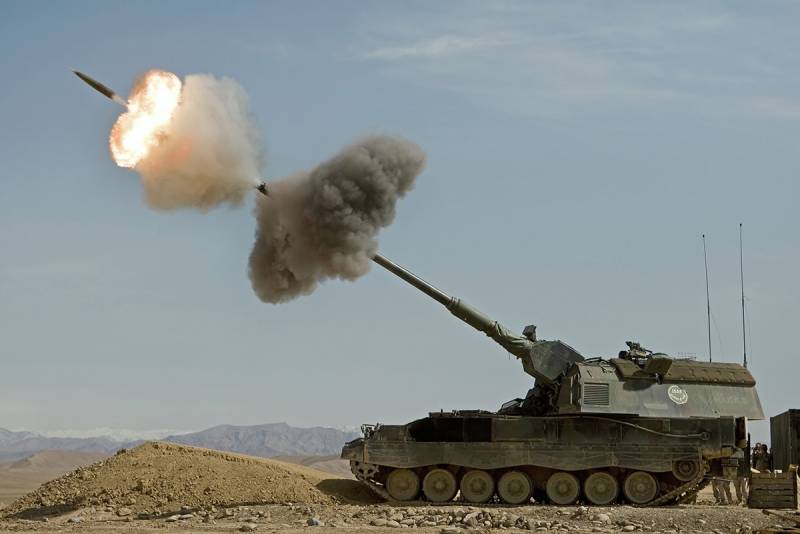
The PzH 2000 howitzer is one of the most common howitzers in Europe. Germany modernizes its fleet with larger caliber guns in order to increase fire efficiency
Maneuverable armored units, however, are necessary for the development of fire action, since the use of artillery alone will mean that both sides will be involved in a scenario similar to the First World War, when entrenched troops sat for months in front of each other, unable to change their position or to go on the attack.
Watling said mobile armored units are increasingly based on mid-range vehicles with protection corresponding to STANAG Level 4-6, which have a lower booking level compared to heavy MBTs, but higher compared to overly vulnerable light vehicles. He explained that the driver of this trend is that the existing missiles and their homing heads "will fairly immobilize the tanks and therefore the mass of armor that you currently need to protect against these missiles is simply unbearable."
Mobile forces
In order to better prepare for a future conflict with an almost equal rival, the French and British army are developing combat units equipped with medium-class armored vehicles by mass, in accordance with their Scorpion and Strike concepts. Speaking at DSEI 2019, a British army spokesman said Strike is a “transformational opportunity” that offers a balance of firepower, mobility, survivability, and combat resilience, which will provide more expeditionary opportunities to politicians. “The Strike brigade will also be lighter and more mobile than motorized infantry, but it will have greater integrated firepower compared to light units.”
Future British Strike brigades will be equipped with new Ajax reconnaissance vehicles and Boxer armored personnel carriers. He explained that they will act as a combined and combined-arms force, will be able to work at an operational distance and “use real-time information from all ground and air platforms tied to the network and then transmit information to soldiers on the ground ... to those in it needs. "
New attack brigades will be able to quickly deploy beyond the reach of the enemy’s weapons and then rapidly attack their positions, while networking and a high level of communication interaction will become one of the main factors in increasing their capabilities. He noted that the army "will not only be able to work in a densely populated, complex and contested urban space, but also disperse if necessary in order to be unpredictable for the opponent."
France follows the same path with its Scorpion ground forces modernization program, according to which the firepower and mobility of existing platforms will be improved and the new Jaguar and Griffon wheeled armored vehicles will be adopted and all of them will be united into a single stable network.
Armored units should avoid what Watling describes as the “lethal attention” of long-range artillery units, which today can afford improved situational awareness, use unmanned systems and have a high level of automation, accelerating the attack process. If detected by the enemy, the unit may be attacked by missiles and artillery in almost real time. The West needs to create such opportunities in order to guarantee an advantage in fire fighting and not to jeopardize its combat units.
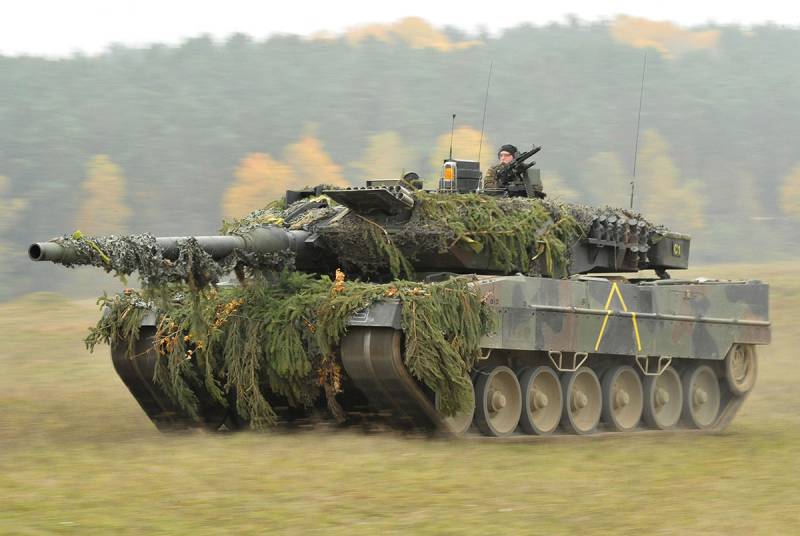
Some European armies are expanding their MBT fleets in order to provide enough armored vehicles in their combat units. However, this increase will be quite modest
Russia is actively engaged in the development of its long-range firearms, including the development of the 9A52-4 Tornado MLRS system with a range of 120 km, which is a noticeable increase compared to the previous version, which could barely reach 70 km. In addition, in 2019, a new 120-mm 2C42 Lotus self-propelled gun was shown, designed for the airborne troops.
Shoot further
When firing artillery systems at a distance of over 40 km, the circular probable deviation increases due to the slightest changes in wind speed or direction when aiming the gun, which cannot be excluded. This means that to neutralize the target, either more shells must be shot, or a high-precision system must be used, but both of these methods have their advantages and disadvantages. The use of significantly more ammunition increases the logistical burden regarding storage and transportation, but adding high-precision systems is also too expensive.
“No one is going to have huge arsenals of firearms that can really fire long distances,” said Watling. The problem of neutralizing targets at long distances is that the number of shells to suppress any defensive system will never be enough. Meanwhile, traditional artillery of shorter range is inexpensive and can overcome the defense, but these systems are unable to get close enough to the enemy, because if they advance, they will become vulnerable to high-precision fire at a long range.
In his work, “The Future of Artillery: Maximizing the Tactical and Operational Fire Power of the British Army,” Watling outlined how Britain needed to respond to the main lines of development. This includes: an expanded line of ammunition, the use of ammunition with an active seeker, the use of multiple sensors and improved defensive measures.
He believes that the West is nominally ahead in almost all of these technologies, but so far they are mainly at the development or initial testing stage, and operating systems need updating. As an example, he called the 155-mm self-propelled howitzer of the British Army AS90, "which is a good system, but, unfortunately, with a barrel of 39 calibers," that is, it has a range of only 24 km compared to the modern Russian analogue with a range of 48 km ceteris paribus.
Layered fire
In March 2019, the British Army issued a request for information as part of the AS90 howitzer replacement program with a new artillery system by the mid-2020s. On this occasion, the Ministry of Defense replied: “Future multi-level artillery capabilities are part of the Future Strategy for firearm destruction (released in September 2018). A single fleet of 155-mm 52-caliber artillery platforms (MFPs) will support Strike motorized infantry and assault brigades. 105-mm artillery, therefore, will remain as a means of very high readiness. "
Looking to the future, Watling noted that solutions for long-range systems after 2030 will require a comparative cost analysis of solutions with a high level of interaction. The continuous development of precision strike systems will provide an opportunity to conduct a full assessment of combat effectiveness and investment in current and planned ground capabilities. This will guarantee the defeat of moving armored targets at a distance of at least 60 km.
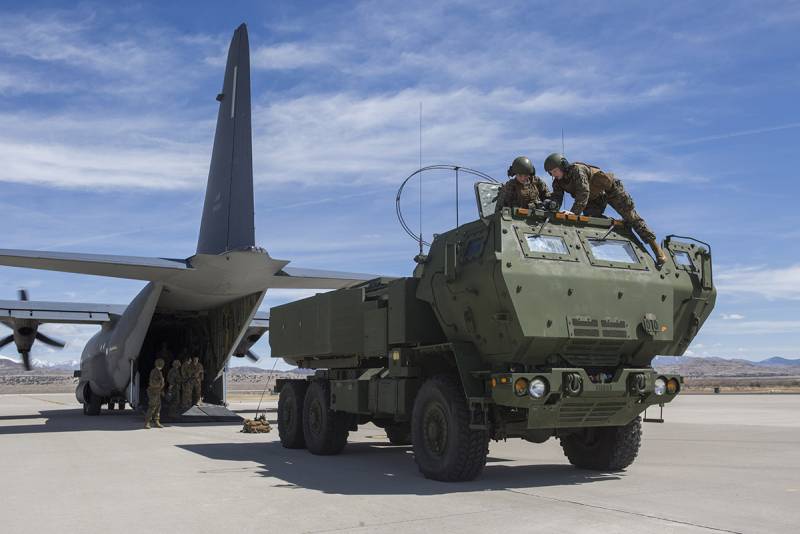
With its superior performance, the HIMARS MLRS can easily defeat a high-precision long-range platform duel. She can decide the outcome of a future conflict with an almost equal rival
According to Watling, the German armed forces decided to install a 60-gauge barrel on their PzH 2000 self-propelled howitzers, which after that could surpass everything the Russians have. “Technology is in our hands,” he said. “Although the West has the technology, it did not actually deploy it, because artillery capabilities were not a priority.”
Now, when the focus is again on high-intensity conflict, NATO very much wanted to raise long-range artillery up in the list of its priority areas. However, defense budgets do not particularly respond to these trends, therefore, it will be necessary to make complex and compromise decisions regarding the priority of financing artillery systems development programs.
Union work
The 2010 agreement between France and the United Kingdom gave impetus to joint cooperation on integrated weapons systems; the next steps will be the development of artillery systems in support of the French and British Scorpion and Strike programs, respectively. It is expected that in a high-intensity conflict, France and the United Kingdom will closely interact and, as allies, deploy large artillery forces and assets in Eastern Europe, especially in a region such as the Baltic countries.
Other countries of the Alliance, for example Poland, are seriously developing their artillery capabilities, mainly for defensive purposes, and it is unlikely that their forces will be deployed outside national borders. In addition, for political reasons, Germany does not promote heavy artillery as a priority.
Watling suggested that Germany’s contribution would most likely be to provide means of transportation and air defense, which would be “critical” in any future conflict. He said that transportation is a huge problem, since the transfer of equipment and weapons from west to east, especially from the United States, is possible only through Germany, since most ports and railways are located on its territory and this process can hardly be carried out without it.
He warned that “at present, in Germany, trains will be enough to transport approximately one and a half armored brigades at the same time, which can actually slow down the deployment and deployment. Therefore, increasing the number of rolling stock and providing protection against air threats and cyberthreats will become a truly useful contribution. ”
Different countries of Europe are actively engaged in activities of various sizes to increase firepower. Denmark bought four more Caesar howitzers, which increased their number to 19, while the Czech Ministry of Defense wants to replace its Dana guns with new 155mm self-propelled artillery mounts and buys 27 PzH2000 howitzers from the German company KMW. Sweden plans to equip its three artillery divisions with new howitzers in the years 2021-2025 in order to improve support for mechanized brigades, which will complement the already operating Archer wheeled self-propelled guns.
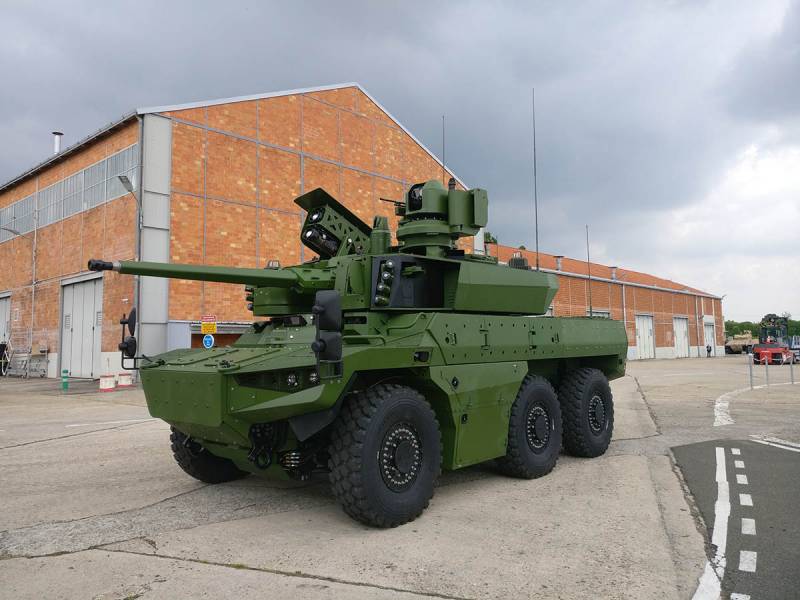
The Jaguar 6x6 armored vehicle is purchased by the French army under the Scorpion modernization program. Future expeditionary armored formations will be equipped with this middle-class platform by weight.
In the meantime, Belgium has officially announced the need for a new self-propelled long-range system, while Poland is purchasing the HIMARS (High-Mobility Artillery Rocket System) from the USA.
In the United States itself, the Army Tactical Missile System fleet is also expanding. In addition, the Pentagon is upgrading guided multiple projectile Guided Multiple Launch Rocket System, which will increase the range of the complex from 70 to 150 km.
Kick deep
Looking to the future, the U.S. Army is funding research and development to meet its future needs for high-precision long-range systems. The new surface-to-surface missile DeepStrike is designed to hit targets at ranges from 60 to 500 km; it shoots back from existing HIMARS and M270 launchers. The army is also actively developing ground-based hypersonic platforms weaponsby issuing contracts for the development of systems of universal hypersonic warheads Common-Hypersonic Glide Body and hypersonic missiles Long-Range Hypersonic Weapon.
The intersectoral group LRPF CFT, organized by the American army, is implementing several projects, including the development of a 155-mm projectile with an XM1113 rocket accelerator, which will increase the range of guns to 40 km, and a new extended-range artillery system ERCA (Extended Range Cannon Artillery), which can send XM1113 projectile at 70 km. The ERCA system will be installed on existing M109A7 US Army self-propelled howitzers, and its turret with a 39-gauge gun will be replaced by a 58-gauge turret with a gun.
The LRPF CFT group is one of six teams dedicated to addressing the inequality of capabilities between forces and assets in the structure of the armed forces. Nevertheless, the army believes that this alone is clearly not enough for modernization.
- noted Watling.
By 2028, the American army wants to be fully prepared for a real clash in Europe, and the main thing here is the ability to carry out joint operational control in all areas - on land, at sea and in the air. Her next goal should be achieved in 2035, by this time the army should be able to conduct operations in all elements, which will allow its units to feel confident in the realities of high-intensity conflict.
The Center for the Development of Future Concepts of the American Army conducts research aimed at determining what is necessary for the unconditional achievement of the above goals. It is necessary to understand and decide which units should be ahead and in which areas of responsibility, and which should be quickly deployed, expeditionary, but capable of conducting active hostilities.
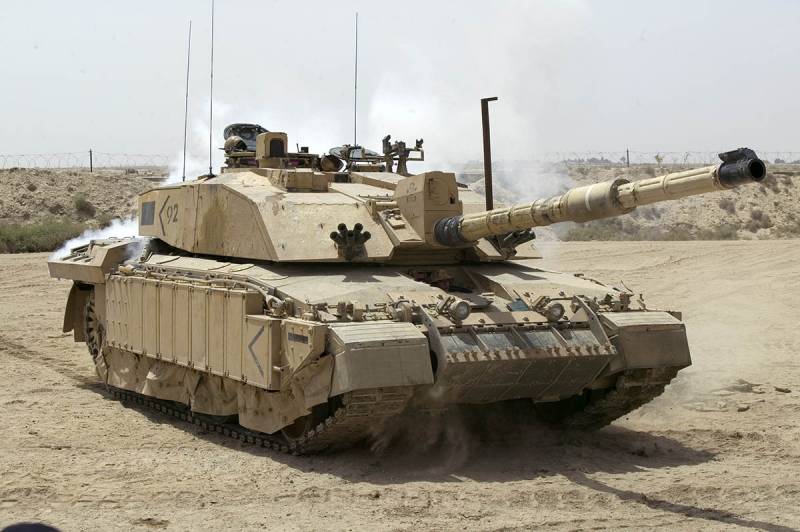
A program is currently being implemented to extend the life of the MBT Challenger 2. The upgraded tank will remain in service until 2035, when the British army will still be forced to start looking for a replacement for its heavy platform
Ultimately, any high-intensity clash is likely to evolve from a non-military situation, such as a trade war, with the United States certainly leading the Western response to Russian and Chinese attacks. Since the future war with an almost equal opponent will probably be short, with quick clashes, with the use of overwhelming firepower (especially on the ground), decisions about which forces to push forward and which will provide the second wave of the expeditionary type (and who will provide them) are key .
Since Western countries are modernizing their armed forces, it is very important that they conduct it in conjunction with the alliance in order to maximize budget allocations and maximize overall capabilities. Otherwise, disunited forces with insufficient capabilities will be in second place in a high-intensity fire battle, which will have very sad consequences.
Information